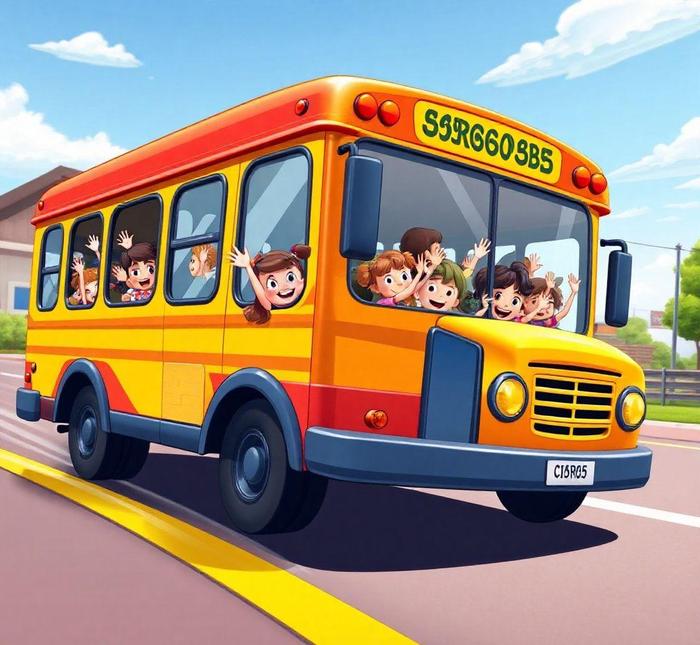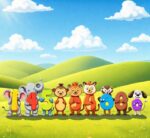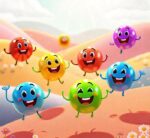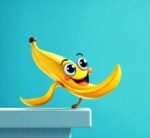- You are here:
- Home »
- words
- » Kindergarten Words That Start With Y [LIST]

Kindergarten Words That Start With Y [LIST]
Introducing young learners to the world of words is a crucial part of early education, and the letter ‘Y’ is no exception. While it may not be the most common starting letter in the English language, there are still many fun and interesting words that begin with ‘Y’ that are perfect for kindergarten students. These words help expand vocabulary, encourage creativity, and introduce children to new sounds and concepts in a playful way.
In this article, we will explore a list of kindergarten words that start with the letter “Y”, providing teachers and parents with useful resources to help foster language development. From simple objects like ‘yellow’ to more exciting terms like “yawn”, these words offer both phonetic value and opportunities for engaging activities. Whether you’re looking for inspiration for classroom lessons or at-home exercises, this list will help young learners make the most of their early vocabulary-building experiences.
Kindergarten Words That Start With Y
1. yellow
Yellow is a bright color often associated with the sun and warmth. It is one of the primary colors and is used in many things like flowers, fruits, and signs.
Examples
- The yellow sun is shining brightly.
- She wore a yellow dress to the party.
- The yellow ball bounced across the floor.
2. yarn
Yarn is a long, thin string made from fibers like wool, cotton, or acrylic. It is used for knitting, crocheting, and other craft projects.
Examples
- She made a scarf with colorful yarn.
- The kitten played with the yarn on the floor.
- Yarn can be used to knit warm sweaters.
3. yell
To yell means to speak or shout loudly, usually to get someone’s attention or express excitement, anger, or other strong emotions.
Examples
- I had to yell to get their attention.
- The coach yelled instructions to the players.
- Please don’t yell; it’s loud and hurts my ears.
4. yes
Yes is a word used to show agreement or affirmation. It is the opposite of no and can be used to answer questions positively.
Examples
- She said yes when asked if she wanted ice cream.
- The answer to the question was yes.
- Yes, I can help you with that.
5. yoga
Yoga is a type of exercise that involves stretching, balancing, and breathing. It helps improve flexibility and relaxation.
Examples
- Yoga helps to stretch and strengthen the body.
- We did a yoga class at school today.
- She practices yoga every morning before breakfast.
6. yellowish
Yellowish means having a yellow tone or appearance. It is often used to describe something that is not purely yellow but has a hint of yellow.
Examples
- The leaves turned yellowish in the fall.
- The sky looked yellowish during the sunset.
- He painted the room a yellowish shade of beige.
7. young
Young refers to someone or something that is in the early stages of life, growth, or development. It is often used for children or animals.
Examples
- The young boy ran quickly to the park.
- She is too young to ride the bicycle alone.
- The young puppy is learning how to bark.
8. yard
A yard is a small outdoor area of land next to a house or building. It can be used for gardening, playing, or relaxing.
Examples
- We have a big yard where I can play soccer.
- The dog ran around in the yard all day.
- She planted flowers in the front yard.
9. yolk
Yolk is the yellow part inside an egg. It provides nutrients and energy to the developing chick in fertilized eggs.
Examples
- The egg’s yolk is yellow and rich in nutrients.
- He cracked the egg and separated the yolk from the white.
- The yolk of an egg is what makes it so tasty.
10. yawn
Yawning is when you open your mouth wide and take a deep breath, usually when you’re tired or bored.
Examples
- She started to yawn because she was feeling sleepy.
- It’s contagious; when one person yawns, others yawn too.
- I yawned during the long meeting.
11. yeti
The yeti, also known as the ‘Abominable Snowman,’ is a mythical creature often said to live in snowy, mountainous regions.
Examples
- The yeti is a mysterious creature from the mountains.
- Some people think the yeti is real, while others think it’s just a legend.
- The children listened to a story about the yeti during class.
12. yoga mat
A yoga mat is a soft, cushioned surface used during yoga exercises. It helps provide support and comfort while performing stretches and poses.
Examples
- She placed her yoga mat on the floor before starting her workout.
- We need to buy a new yoga mat because the old one is worn out.
- A yoga mat helps keep you comfortable during exercises.
13. yummy
Yummy is an informal word used to describe food that tastes very good. It is often used by children to express enjoyment of something delicious.
Examples
- The cookies you baked are so yummy!
- That pizza looks yummy; I can’t wait to eat it.
- Yummy strawberries are my favorite snack.
14. yip
Yip is a short, high-pitched bark or sound made by small dogs, especially when they are excited or startled.
Examples
- The small dog gave a quick yip when it saw a squirrel.
- He made a yip sound when the toy tugged on his arm.
- The puppy yipped in excitement as it played with the ball.
15. yellowstone
Yellowstone is a large national park located in the U.S. It is known for its geothermal features, wildlife, and scenic beauty.
Examples
- Yellowstone is a famous national park in the United States.
- We visited Yellowstone last summer and saw a geyser.
- Yellowstone has many wild animals, like bears and bison.
16. yak
A yak is a large, long-haired animal found in the mountains of Asia. It is related to cattle and is used for carrying loads or providing milk.
Examples
- The yak is a large animal that lives in the mountains.
- Yaks are used by people in the Himalayas to carry heavy loads.
- We saw a yak during our trip to the mountain village.
17. yellowtail
Yellowtail is a type of fish that has a yellow tail and is often found in the oceans. It is popular in cooking, especially in sushi.
Examples
- We caught a yellowtail fish while fishing by the beach.
- Yellowtail is a type of fish with yellow fins.
- The yellowtail swam quickly through the water.
18. yarn ball
A yarn ball is a round shape made by rolling yarn into a ball. It is used for knitting, crocheting, or as a toy for pets.
Examples
- The cat played with a yarn ball all afternoon.
- She rolled the yarn into a ball to keep it neat.
- I need to buy a yarn ball to finish my knitting project.
19. yellowfin
Yellowfin is a type of tuna fish that has distinctive yellow fins. It is highly prized for its meat and is often used in sushi.
Examples
- The yellowfin tuna is known for its bright yellow fins.
- Yellowfin tuna is a popular type of fish to eat.
- The fisherman caught a large yellowfin off the coast.
20. yew
Yew is a type of evergreen tree with dark green needles. Its wood is very strong and has been used for crafting tools and furniture.
Examples
- The yew tree has dark green leaves and red berries.
- Yew wood is very strong and is often used in making furniture.
- The garden has a beautiful yew hedge.
21. youth
Youth refers to the time in a person’s life when they are young, typically during childhood and adolescence, before reaching adulthood.
Examples
- He spent his youth playing sports and traveling.
- The youth of today are more connected with technology.
- Youth is a time of learning and growing.
22. yellowtail snapper
Yellowtail snapper is a type of fish with a yellow tail. It is commonly found in the Caribbean and is popular in cooking.
Examples
- We ordered yellowtail snapper for dinner at the restaurant.
- The yellowtail snapper is a brightly colored fish.
- Yellowtail snapper is a popular fish for grilling.
23. year
A year is a period of 365 days (or 366 in a leap year). It is used to measure time and is divided into months, weeks, and days.
Examples
- There are twelve months in a year.
- This year, I am going to learn how to ride a bike.
- We celebrated the new year with fireworks.
24. yellowjacket
A yellowjacket is a type of wasp that is black and yellow. It is known for its painful sting and aggressive behavior.
Examples
- The yellowjacket is a type of wasp that can sting.
- Be careful of the yellowjackets near the trash can.
- Yellowjackets are known for being aggressive.
25. yonder
Yonder is a word used to refer to something in the distance. It is often used in old-fashioned or poetic language.
Examples
- We will walk to the park over yonder.
- Do you see that mountain yonder?
- The bird flew away over yonder in the distance.
26. yo-yo
A yo-yo is a toy that consists of a string wound around a spool. When the spool is thrown, it spins and then returns to the hand.
Examples
- I learned how to do tricks with my yo-yo.
- She played with her yo-yo for hours.
- The yo-yo went up and down as she spun it on the string.
Historical Context

The inclusion of specific words in kindergarten curricula is deeply tied to cultural shifts in education, particularly in Western societies. The letter "Y" has long been a part of the alphabet, and while it may not be as commonly used as some other letters, its historical significance remains noteworthy. In the development of the English language, the letter "Y" was introduced as a letter derived from the Greek alphabet via the Latin alphabet. Early alphabet systems did not distinguish between the "Y" sound and other vowels, making it an intriguing point of study for linguists. Words starting with "Y" have gradually become more accessible to young learners over time, often included to expand children’s vocabulary and increase their phonetic awareness. These words might seem like minor players in the larger pool of vocabulary but serve to connect children to deeper linguistic histories, such as the evolution of ancient Greek and Latin, languages which have influenced English at every level.
Word Origins And Etymology
The origins of kindergarten words that begin with "Y" trace back to a range of different languages. One key factor influencing the phonetic nature of "Y"-starting words is the dual role of "Y" as both a consonant and a vowel. Take for instance "yellow," which comes from Old English geolu, meaning "yellow" or "golden," itself derived from Proto-Germanic roots. Words like "yes" and "yarn" find their etymology in Old English and Middle English, with "yes" stemming from the Old English gēse, an affirmation used to express agreement. Meanwhile, "yarn" originates from the Old English gearn, meaning "thread" or "fibers," rooted in a broader Germanic tradition. As we delve into "Y"-starting words, it becomes clear that many are tightly connected to Old English and early linguistic forms, which brings a sense of continuity from past language systems to the educational tools used for today’s young learners.
Common Misconceptions
There are several misconceptions about words starting with "Y" that may influence how children learn them. One common error is confusing the "Y" sound with the "J" sound, especially in words like "yellow" or "yoga," leading to mispronunciations. The idea that "Y" is a rare or difficult letter to use also leads to misunderstandings about its importance in language development. In reality, "Y" is a versatile letter, used not only in words like "yes" or "yarn" but also in more complex vocabulary, which young learners may not immediately recognize. Another misconception is that "Y" is only used in technical or uncommon words, when in fact it forms the backbone of many everyday words, from the simple "you" to the more descriptive "yummy." Helping children identify and understand "Y"-beginning words can eliminate this confusion and reinforce their phonetic development.
Conclusion
The study of kindergarten words that begin with "Y" opens up a fascinating window into the history, evolution, and challenges of the English language. By understanding their origins, misconceptions, and the larger context in which they have evolved, educators can better equip young learners to grasp not just the pronunciation but also the significance of the words they encounter. As children begin to explore the alphabet in its entirety, mastering "Y" words enriches their linguistic foundation and ultimately strengthens their understanding of how language works across time and cultures.








